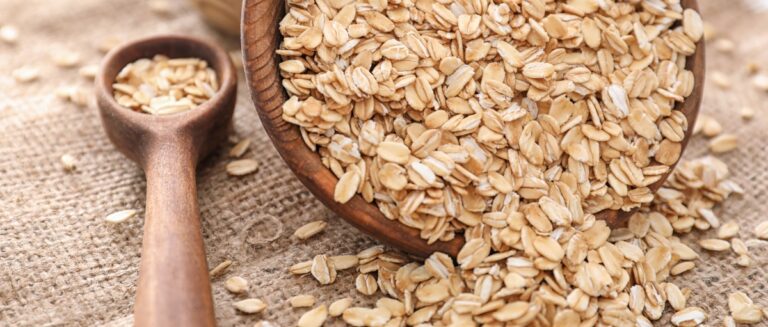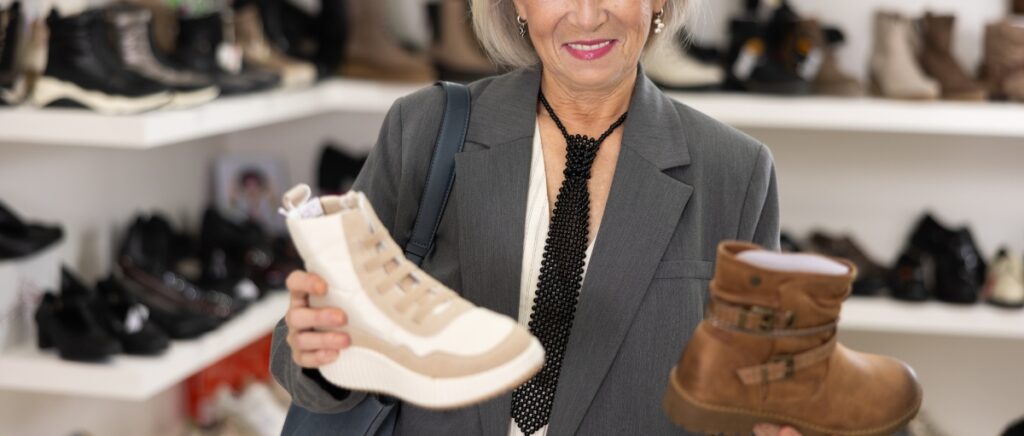For many seniors, walking is a vital exercise that promotes physical and mental well-being. However, wearing improper footwear can quickly turn a leisurely stroll into a painful experience. Did you know that up to 87% of older adults have at least one foot problem? That’s why choosing the right walking shoes is crucial for staying active, comfortable, and safe in your golden years.
As we age, our feet undergo natural changes that can significantly impact our footwear needs. Flattened arches, swelling, and reduced sensitivity may require increasing your shoe size by half. These changes require shoes that provide ample support, cushioning, and protection. But with so many options on the market, finding the perfect pair can feel overwhelming.
We’ve done the research to bring you the ultimate resource for choosing the best walking shoes for seniors. We’ll explain the key features to look for in walking shoes for seniors and explore different types of sneakers for common foot conditions. Then, we’ll share our top picks for the best senior walking shoes on the market.
Whether you’re strolling through the park or running errands around town, we’ve got your feet covered.
What to Look for in Walking Sneakers for Seniors
When shopping for walking shoes, seniors should prioritize several key features that cater to their specific needs. Here’s what to look for:
- Overall Fit: A proper fit is essential for both comfort and stability. Choose shoes with heel support, enough width for swelling or foot issues, and room in the toe box for natural movement.
- Cushioning and Padding: Ample cushioning helps absorb shock and reduce pressure on the feet. Choose shoes with well-cushioned insoles, especially in the heel and arch, along with padded collars and tongues for extra comfort.
- Spacious Toe Box: Toes should spread out naturally. This helps balance and lowers the risk of bunions or hammertoes. Leave a thumb’s width of space at the front.
- Supportive Heel Counter: A sturdy heel counter provides stability and helps maintain proper foot alignment. This is particularly important for seniors with balance issues or those prone to ankle rolls.
- Non-Slip Outsole: Look for hands-free non-slip soles that grip well and help prevent falls.
- Easy to Put On and Take Off: Seniors with dexterity issues should try wide-opening shoes with velcro, zippers, or slip-ons.
- Low, Stable Heel: Avoid high heels, as they can throw off balance and put extra pressure on the forefoot. Instead, wear shoes with low heels (under one inch) to keep your foot neutral and reduce ankle strain.
Seniors who prioritize these features can walk comfortably, safely, and confidently through their golden years.
Top 10 Picks for the Best Walking Shoes for Seniors
Finding the perfect walking shoe can be overwhelming with so many options available. To help narrow down your search, here are our top picks for the best shoes for the elderly in various categories:
Overall Best
- Men’s Vionic 23Walk Classic: This shoe features a podiatrist-designed footbed for excellent arch support and a durable, water-resistant leather upper.
- Skechers Women’s Go Walk Joy: These shoes offer responsive cushioning, a breathable mesh upper, and a convenient slip-on design.
Best Budget
- Men’s ASICS Gel-Excite 9: This affordable option provides gel cushioning in the heel for shock absorption and a breathable mesh upper for comfort.
- Tiosebon Slip-On Women’s Walking Shoe: With a lightweight design, breathable mesh upper, and slip-on convenience, this shoe offers great value for its price.
Best for Specific Needs
- Brooks Adrenaline GTS 22: Best for Comfort—This shoe features plush cushioning, a supportive fit, and GuideRails technology for added stability.
- New Balance 990v5: Best for Balance—The 990v5 offers a stable base, a firm heel counter, and excellent cushioning to help improve balance.
- Skechers Arch Fit 2.0: Best for Stability—This shoe provides enhanced stability and comfort with a podiatrist-certified arch support system.
- Skechers Slip-Ins Ultra Flex 3.0: Best Slip-On—These shoes offer a convenient slip-on design, responsive cushioning, and a stretchy, breathable upper.
- ABEO MXV Shift Metatarsal: Best for Heel Pain—Featuring a metatarsal support system and ample cushioning, this shoe helps alleviate heel pain and discomfort.
- Orthofeet’s Lava Stretch-Knit Athletic: Best for Arch Support—This shoe features a removable orthotic insole and a stretchable upper for customizable arch support and comfort.
Different Types of Needs
While the key features discussed above are essential for all seniors, some may require athletic shoes designed to support specific foot conditions or mobility concerns. Let’s take a look at different types of shoes designed to address these needs:
Balance Issues
Proper footwear can improve balance, particularly in older individuals struggling with balance and mobility issues. Look for shoes with:
- A wide, stable base to promote better balance.
- A firm heel counter to keep the foot in place.
- A low, stable heel to maintain a neutral foot position.
Plantar Fasciitis
Plantar fasciitis is a common cause of heel pain among seniors. Shoes that provide ample arch support and cushioning can help alleviate discomfort. Consider shoes with:
- Contoured footbeds that support the arches.
- Extra cushioning in the heel area to absorb shock.
- A slightly raised heel to reduce strain on the plantar fascia.
Heel Pain
In addition to plantar fasciitis, seniors may experience heel pain due to various other factors, such as heel spurs or Achilles tendonitis. Shoes with targeted heel support can provide relief. Look for:
- Ample cushioning in the heel area to reduce impact.
- A slightly elevated heel to minimize strain on the Achilles tendon.
- A stabilizing heel counter to keep the foot in proper alignment.
Arch Support
Proper arch support is crucial for seniors, as it helps distribute weight evenly and reduces strain on the feet and ankles. Shoes with good arch support can also help alleviate pain associated with flat feet or high arches. Look for:
- Contoured footbeds that match the shape of your arch.
- Firm midsoles that provide stability and prevent overpronation.
- Removable insoles that can be replaced with custom orthotics if needed.
By choosing shoes designed to address their specific foot concerns, seniors can enjoy greater comfort, support, and mobility in their daily lives.
Tips for Buying and Wearing Shoes
To ensure you get the most out of your walking shoes, keep these tips in mind:
- Get your feet measured regularly, as foot size and shape can change over time.
- Shop for shoes later in the day when your feet are at their largest.
- Wear the same type of socks you plan to wear with your new shoes.
- Make sure there’s a thumb’s width of space between your longest toe and the front of the shoe.
- Walk around the store to get a feel for the shoes before purchasing.
- Replace your walking shoes every 300-500 miles or every six months, whichever comes first.
- Rotate between two pairs of shoes to allow them to dry out completely between uses.
Put Your Best Foot Forward
Investing in the right walking shoes is crucial in maintaining foot health and staying active as a senior. You can find a pair of shoes that will keep you comfortable and confident on your feet by prioritizing key features like proper fit, cushioning, support, and stability.
Remember to consider your individual needs and foot concerns when selecting, and don’t hesitate to consult with a podiatrist if you have persistent foot pain or issues. With the right shoes and a commitment to regular walking, you’ll be well on your way to enjoying the many benefits of an active lifestyle in your golden years. So go ahead, put your best foot forward, and enter a world of comfort and wellness.
Sources
National Center for Biotechnology Information. (2018). Age-related foot pain and balance disorders. Retrieved from https://www.ncbi.nlm.nih.gov/pmc/articles/PMC5813943/
UCLA Health. (2018). Coping with the changes your feet undergo as you age. Retrieved from https://www.uclahealth.org/news/article/coping-with-the-changes-your-feet-undergo-as-you-age
American Podiatric Medical Association. (n.d.). Balance boosting tips for aging feet. Retrieved from https://www.apma.org/balanceboosting
Itasca Foot & Ankle. (2023). Top causes of heel pain in seniors. Retrieved from https://www.itascafootandankle.com/component/k2/item/402-top-causes-of-heel-pain-in-seniors
Mayo Clinic. (2023). Causes of heel pain. Retrieved from https://www.mayoclinic.org/symptoms/heel-pain/basics/causes/sym-20050788
Mayo Clinic. (2021). Achilles tendinitis: Symptoms and causes. Retrieved from https://www.mayoclinic.org/diseases-conditions/achilles-tendinitis/symptoms-causes/syc-20369020
Modern Foot & Ankle. (2024). Guide to arch supports. Retrieved from https://www.modernfootankle.com/resources/foot-care/guides/arch-supports
Ankle & Foot Centers of Georgia. (n.d.). How to choose the right shoes for your feet. Retrieved from https://ankleandfootcenters.com/how-to-choose-the-right-shoes-for-your-feet/











